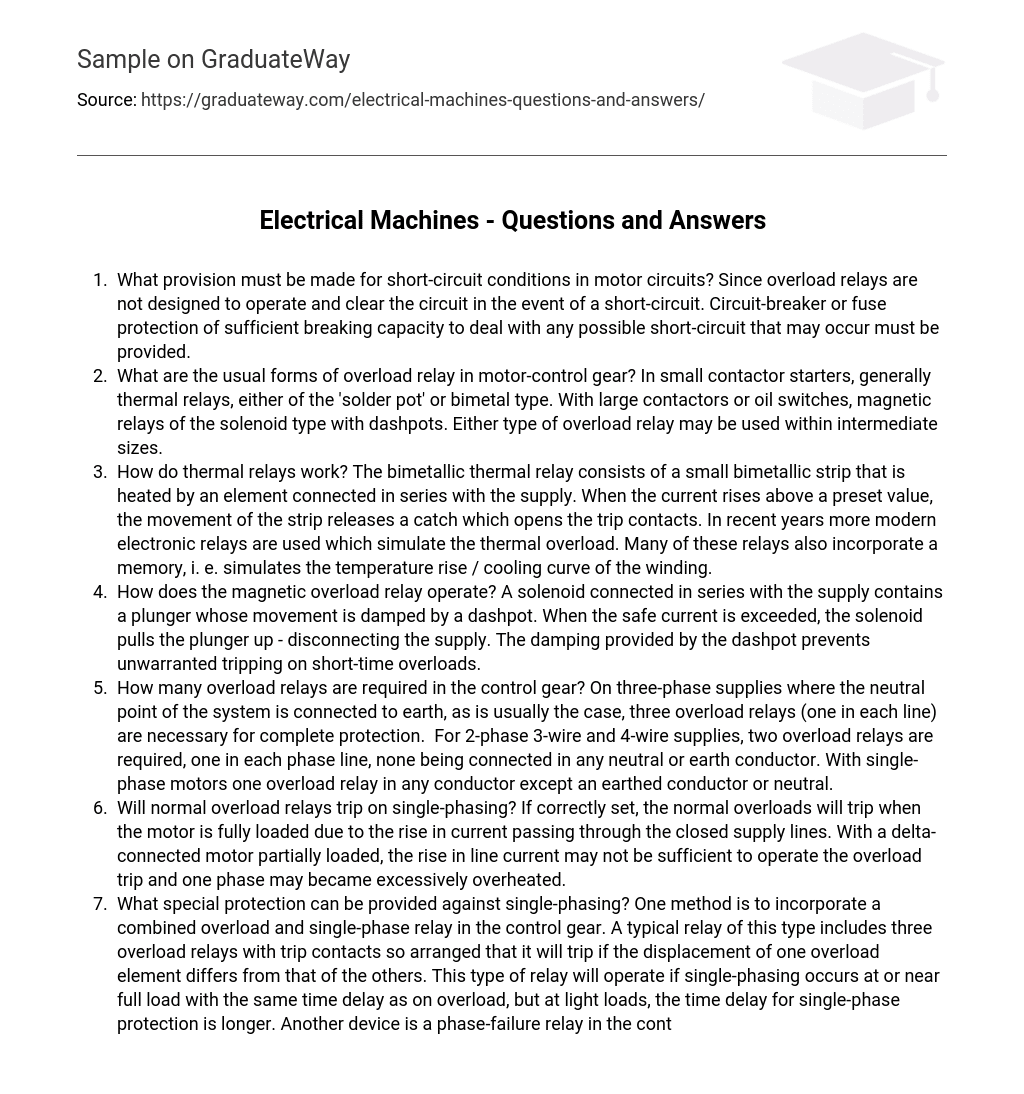- What provision must be made for short-circuit conditions in motor circuits? Circuit-breaker or fuse protection of sufficient breaking capacity to deal with any possible short-circuit that may occur must be provided, since overload relays are not designed to operate and clear the circuit in the event of a short-circuit.
- What are the usual forms of overload relay in motor-control gear? Generally, thermal relays, either of the ‘solder pot’ or bimetal type, are used in small contactor starters. With large contactors or oil switches, magnetic relays of the solenoid type with dashpots are used. Either type of overload relay may be used within intermediate sizes.
- How do thermal relays work? The bimetallic thermal relay consists of a small bimetallic strip that is heated by an element connected in series with the supply. When the current rises above a preset value, the movement of the strip releases a catch which opens the trip contacts. In recent years more modern electronic relays have been used which simulate thermal overload. Many of these relays also incorporate memory and simulate temperature rise/cooling curve of winding.
- How does magnetic overload relay operate? A solenoid connected in series with supply contains plunger whose movement is damped by dashpot. When safe current is exceeded, solenoid pulls plunger up – disconnecting supply. The damping provided by dashpot prevents unwarranted tripping on short-time overloads.
- How many overload relays are required in control gear? On three-phase supplies where neutral point system is connected to earth (as usually), three overload relays (one in each line) are necessary for complete protection. For 2-phase 3-wire and 4-wire supplies two-overload-relay required one-in-each-phase line, none being connected in any neutral or earth conductor. With single-phase motors one overload relay in any conductor except an earthed conductor or neutral.
- Will normal overload relays trip on single-phasing? If correctly set, the normal overloads will trip when the motor is fully loaded due to the rise in current passing through closed supply lines. With a delta-connected motor partially loaded, the rise in line current may not be sufficient to operate overload trip and one phase may become excessively overheated.
- What special protection can be provided against single
Electrical Machines – Questions and Answers
Cite this page
Electrical Machines – Questions and Answers. (2016, Sep 28). Retrieved from
https://graduateway.com/electrical-machines-questions-and-answers/





